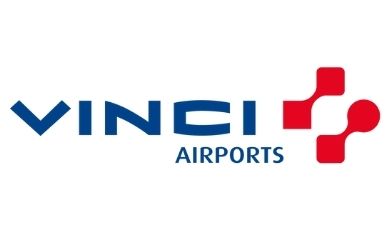Source: Vinci Airports
● Passenger numbers down 72.8% in June 2021 versus June 2019, down 79.1% overall in Q2
● The pace of traffic recovery varies depending on the country
● Traffic remains near pre-crisis levels in the United States, Dominican Republic and Costa Rica
● Traffic is improving in continental Europe, but figures are still considerably lower than in Q2 2019
● Travel restrictions continue to hamper flight resumption in Asia and at London Gatwick
VINCI Airports’ network handled around 14 million passengers in Q2 2021, i.e. 79.1% less than in Q2 2019. Traffic remained very low in April (down 84%) then increased in May (down 80%) and June (down 73%)1. Passenger numbers continue to climb back to pre-pandemic levels in places where travel restrictions were lifted several months ago. This is especially the case with domestic flights in the United States, for example Orlando Sanford, where traffic is down 14% in June 2021 versus June 2019. Passenger numbers in the Dominican Republic and at Guanacaste in Costa Rica in June 2021 were close to June 2019 levels and this trend is expected to continue in the coming months2. Elsewhere, traffic is still below 2019 levels but picks up as soon as travel restrictions are relaxed. Most airports in continental Europe and Salvador Bahia Airport in Brazil have seen a significant upswing in recent weeks. Passenger numbers in some cases were even higher than in 2019. New travel restrictions in the European market – especially Portugal – may curtail the recovery in international traffic this summer.
Lastly, traffic is still at a standstill in Japan (international flights), Cambodia and London Gatwick (where the figures may increase if restrictions are eased as planned starting on 19 July) due to the severe limitations still in place. In the sections below, unless otherwise stated, the changes in traffic levels in 2021 are relative to the figures for the same period in 2019.
- In Costa Rica, the upward trend in traffic at Guanacaste Airport accelerated very significantly in Q2, and the figures in June 2021 almost reached the same levels as in June 2019 (down 2.3%). Several services that had been stopped during the pandemic restarted in Q2, including Southwest flights to Houston and Baltimore. Costa Rica is one of the few destinations that apply no restrictions to passengers from the United States.
- The number of passengers at the airports in the Dominican Republic has been growing gradually for a year, and this trend picked up pace in mid-March 2021. Over the quarter, traffic is down 17.1%. Passenger numbers on some routes have increased sharply compared to 2019, including flights between Las Américas Airport in Santo Domingo and Miami (up 36%), Fort Lauderdale (up 23%), Boston (up 23%) and New York (Newark, up 20%). This trend could strengthen in Q3 this year as the flight programme in Santo Domingo is almost 20% above that in summer 20193.
- Traffic at Salvador Bahia Airport in Brazil grew in Q2 as the pandemic stabilised in most of the country’s states (notably Bahia). Passenger numbers rose almost 40 points over the period, from down 63.7% the first week of April to down 24.9% at end-June, and averaged out at down 43.6% over the quarter. Aircraft movements reached their 2019 levels in the week of 14 June. Itapemirim, a new airline, started operating regular flights to Salvador on 30 June, which should contribute to increasing traffic at this airport. Airlines’ flight programmes for the coming quarter are 10.8% lower than in summer 20193, confirming the airport’s swift recovery.
- In Chile, traffic was trending down at the beginning of Q2 due to new travel restrictions following a resurgence in the pandemic. It has since seen an uptick, from down 84.8% in mid-April to down 75% at end-June, mostly on domestic routes (Chile’s borders remain closed). Over the quarter, the drop in passenger numbers amounts to 78%.
- Passenger numbers in the United States continued to climb back to their 2019 levels in Q2, buoyed by the waning pandemic, the federal government’s Rescue Plan and spring break. Traffic at Orlando Sanford improved from down 37.9% in April to down 13.8% in June, with an almost 30-point leap in 3 weeks around Memorial Day (30 May). Illustrating this healthy dynamic, Avelo, a new airline, started operating flights from Hollywood Burbank to 11 destinations in the west of the United States in April.
- In Portugal, passenger traffic improved in Q2, from down 86.5% in April to down 66.6% in June, buoyed by the gradual relaxing of travel restrictions. Over the full quarter, the numbers are 76.6% lower. The trend at Funchal Airport is better (down 46.7% in June) as Madeira was the first Portuguese region to reopen after the lockdown, as the epidemiological situation there was under control. Madeira was included in the UK’s green list on 30 June, making it one of the few destinations that passengers can visit without being required to quarantine on return to the UK. Even though easyJet recently opened a base in Faro, the tourist season in Portugal may suffer in the short term from the new restrictions aimed at curbing the recent upswell in the pandemic.
- Heavy international travel restrictions in the United Kingdom continue to severely hamper operations at London Gatwick, where traffic is down 96.7% over the quarter. Belfast International, where easyJet started up new domestic flights to Leeds Bradford and East Midlands in June, benefited from the lockdown easing in the UK in May. Traffic there – which is essentially domestic – picked up from minus 89.8% in April to minus 71.4% in June. The further easing of restrictions planned on 19 July may boost the recovery in passenger numbers.
- In France, quarterly traffic is down 78.1%. Travel restrictions weakened traffic at the beginning of the quarter but their progressive relaxing in May and at the beginning of the tourist season spurred an increase in passenger numbers. Passenger traffic rose sharply at the airports in Lyon and Nantes in recent weeks, to down 59% and down 50% respectively at end-June, to a large extent because Volotea set up a base providing services to 29 destinations from Lyon. The figures in June were very promising in Nantes, where traffic has climbed back to its 2019 levels or exceeded them on flights to Bastia (up 10%), Ajaccio (down 3%) and Montpellier (up 28%). At Toulon Hyères, buoyant domestic traffic pushed figures up, limiting the shortfall to 44.5% in June. This trend is expected to continue in France as several lines that were closed in 2020 have reopened (7 new destinations in Lyon, 17 new lines in Nantes, easyJet’s new services in Toulon).
- In Serbia, the gradual easing of travel restrictions led to a rapid increase in passenger traffic at Belgrade Airport, which rose from down 67% at end-April to down 36.1% at end-June, principally buoyed by flights to and from Montenegro (Tivat, down 16%), Egypt (Hurghada, up 90%) and Turkey (Istanbul, down 27%). Overall, traffic in Q2 2021 is 59.5% below its Q2 2019 level. This upward trend is expected to continue, as airlines’ flight programmes in Belgrade are only 17% short of their programme in summer 2019.
- After decreasing at the beginning of the quarter due to the new pandemic wave in Europe, traffic at Stockholm Skavsta in Sweden climbed back to a 60% shortfall at end-June. On average, traffic is down 83.7% over the quarter. Trade Air started up a service to Pristina (Kosovo) on 6 June, and Wizz Air started up two new services to Banja Luka and Sarajevo (Bosnia and Herzegovina).
- In Japan, the upturn in domestic traffic that had started in February stopped when the country declared a new state of emergency on 23 April. International traffic has not resumed as the country’s borders remain closed, and overall passenger numbers stood at minus 84.6% in Q2.
- Due to delays in vaccination campaigns in the region, Cambodia maintained very tight restrictions on passengers entering the country, resulting in practically no traffic over the quarter.


